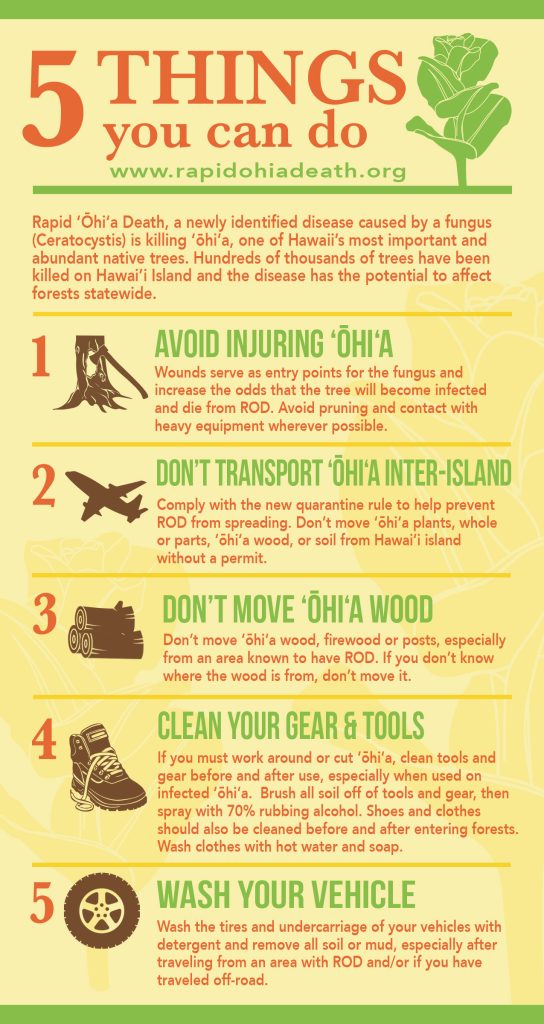
**IMPORTANT PARK NOTICES**
Monitor local surf and weather reports prior to your park visit.
[KAUA’I] UPDATED - 7/25/24: Wailua River State Park, Opaekaa Falls restroom is CLOSED due to a water main break until further notice.
•
[KAUA’I] UPDATED 7/24/24 – Road to Kōkeʻe and Waimea Canyon State Parks has REOPENED.
•
[MAUI] UPDATED 7/24/24 – Polipoli Spring State Recreation Area: Access to the park and cabin has REOPENED.
•
[KAUAʻI] UPDATED 6/18/24 –Kalalau Trail, Nāpali Coast State Wilderness Park: Camping permits held back for local residents during summer, see Kalalau Trail site for more information.
•
[KAUAʻI] UPDATED 6/18/24 – Kōkeʻe State Park: The gate to Puʻu O Kila Lookout will be closed to vehicular traffic due to road repairs beginning 3/19/24. The lookout will still be accessible by pedestrians, parking is available at Kalalau lookout.
Waʻahila Ridge State Recreation Area
| Hours |
Summer: 7:00am to 7:45pm
Winter: 7:00am to 6:45pm
Summer Hours Begin on April 1st Winter Hours Begin the Day After Labor Day |
| Entrance Fee | None |
| Trail Names |
Description
Wildland picnicking on a Norfolk Island pine forested ridge with fine views of Manoa and Palolo valleys. Enjoy hardy family hiking in the forest reserve.
While dogs are not allowed in the park, they may traverse the park while leashed to access the Waʻahila Ridge Trail.
HELP HAWAII FIGHT RAPID ʻŌHIʻA DEATH (ROD)
ʻŌhiʻa (Metrosideros polymorpha), the most abundant native tree in the state of Hawaiʻi, are dying from a new fungal disease. On Hawaiʻi Island, and currently spreading to other islands, hundreds of thousands of ʻōhiʻa have already died from this fungus, called Ceratocystis. Healthy trees appear to die within a few days to a few weeks, which is how the disease came to be called “Rapid ʻŌhiʻa Death.” This disease has killed trees in all districts of Hawaiʻi Island and has the potential to kill ʻōhiʻa trees statewide. – College of Tropical Agriculture and Human Resources (CTAHR), University of Hawaii at Manoa. There is no effective treatment to protect ʻōhiʻa trees from becoming infected with Ceratocystis or cure for trees that exhibit symptoms of the disease. Therefore, we have an important role to help prevent the further spread of Rapid ʻŌhiʻa Death. There are 5 simple things we can all do to help in this effort:
1) Don’t move ʻōhiʻa wood or ʻōhiʻa parts. If you don’t know where the ʻōhiʻa material is from, don’t move it.
2) Don’t transport ʻōhiʻa inter-island. Follow the Hawaii State Department of Agriculture quarantine rule and don’t move ʻōhiʻa off of the Island of Hawaiʻi.
3) Avoid injuring ʻōhiʻa. Wounds serve as entry points for the fungus and increase the odds that the tree will become infected and die from ROD. Avoid pruning and contact with heavy equipment wherever possible.
4) Clean gear and tools, including shoes and clothes, before and after entering forests. Brush all soil off of tools and gear, then spray with 70% rubbing alcohol. Wash clothes with hot water and soap.
5) Wash your vehicle with a high pressure-hose or washer if you’ve been off-roading or have picked up mud from driving. Clean all soil off of tires and vehicle undercarriage.
For more information on Rapid ʻŌhiʻa Death please see the videos and outreach material below.
ROD Brochure Hawai‘i Island Dec 2018 4-Panel




